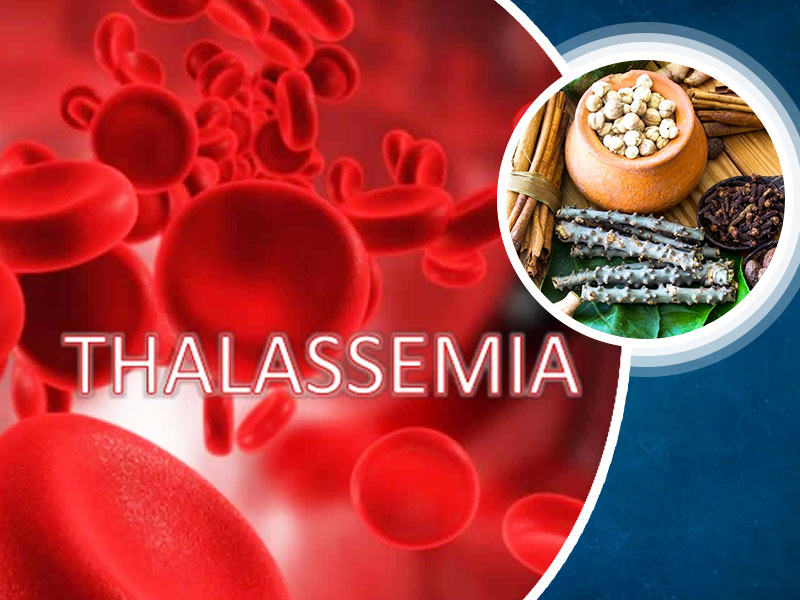
Not known to many, Thalassemia is a blood disorder that causes an individual’s body to have less haemoglobin than normal. The disease is genetic and gets transferred from parents to their offspring. Haemoglobin enables the red blood cells to carry oxygen to the whole body, hence thalassemia patients often feel tired and fatigued. This World Thalassemia Day, Mr. Vikas Chawla, Ayurvedic Pharmacist from Punjab State Faculty of Ayurvedic and Unani System of Medicine, Mohali and Founder, Director of Vedas Cure shares some ways to fight thalassemia through Ayurveda.
Table of Content:-
Lack of haemoglobin leaves the body anaemic and often low on energy. Apart from tiredness and fatigue, other symptoms of Thalassemia include pale skin, change in the colour of urine, abdominal swelling.
Causes of Thalassemia
The condition of thalassemia occurs due to the mutations in the DNA of the cells that form haemoglobin. Haemoglobin cells are made up of chains called alpha and beta chains and the mutations consequently affect the chains by reducing their production, resulting in either alpha or beta-thalassemia. As per the expert, “The severity of alpha-thalassemia depends on the number of gene mutations you inherit from your parents. More mutated genes mean more severe thalassemia. The severity of beta-thalassemia depends on the part of the hemoglobin molecule that is affected.”

Also Read: 7 Reasons Why Asians Are More Prone To Thalassemia
The disease of Thalassemia has been classified into two categories:
- Thalassemia Major
- Thalassemia Minor
If both the parents are a carrier of Thalassemia Minor then,
- There are 25% chances that the child may develop Thalassemia Major. The symptoms of Thalassemia are quite visible in this case such as paleness of skin, tiredness and fatigue, anemia, etc.
- There are 25% chances that the child would neither have major nor minor Thalassemia.
- There are 50% chances that the child will have Thalassemia minor. In this case, the symptoms of Thalassemia would hardly be noticed. But this child may be a carrier of Thalassemia further to his children.
Ayurvedic Management for Thalassemia
“Thalassemia is a common disease and in the Rights of Persons with Disabilities (RPWD) Act, 2016, it has been classified as a disability. In India, every year close to 10,000 children are being born with thalassemia which accounts for 10% of the total world incidence of thalassemia-affected children and one in eight thalassemia carriers live in India.”
Just like diabetes, Thalassemia cannot be cured completely but can be managed and controlled effectively. In severe cases of major Thalassemia, the patient may require a blood transfusion in the body but at the same time, there are some Ayurvedic herbs that help in the natural production of blood cells and haemoglobin in the body.

Also Read: Five Things To Bear In Mind When Living With This Blood Disorder
Ayurvedic companies including Vedas Cure have a various research-based list of natural herbs which have proven to be effective in Thalassemia. In Charak Samhita and some ancient Ayurvedic text and research available with us, these herbs and ingredients like Giloy, Chiraiyta, Wheatgrass, Chukandar, Tulsi, Amla, Arjun Chhal, Daal Chini, Mulethi, Gulaab Phool, Brahmi, Shatavar, Ashok Chhal, and Naag Kesar are suggested for the natural production of haemoglobin.
Apart from this, the patient may also be given Loh Vati, Punarnavadi Mandoor and the diet must contain a lot of Apples, Grapes, and Pind Khajoor (Dates). Saffron (Kesar) in milk is also good for the patient of Thalassemia. But any treatment must be taken after consultation with a doctor.
Read More Articles in Ayurveda
Also watch this video
How we keep this article up to date:
We work with experts and keep a close eye on the latest in health and wellness. Whenever there is a new research or helpful information, we update our articles with accurate and useful advice.
Current Version